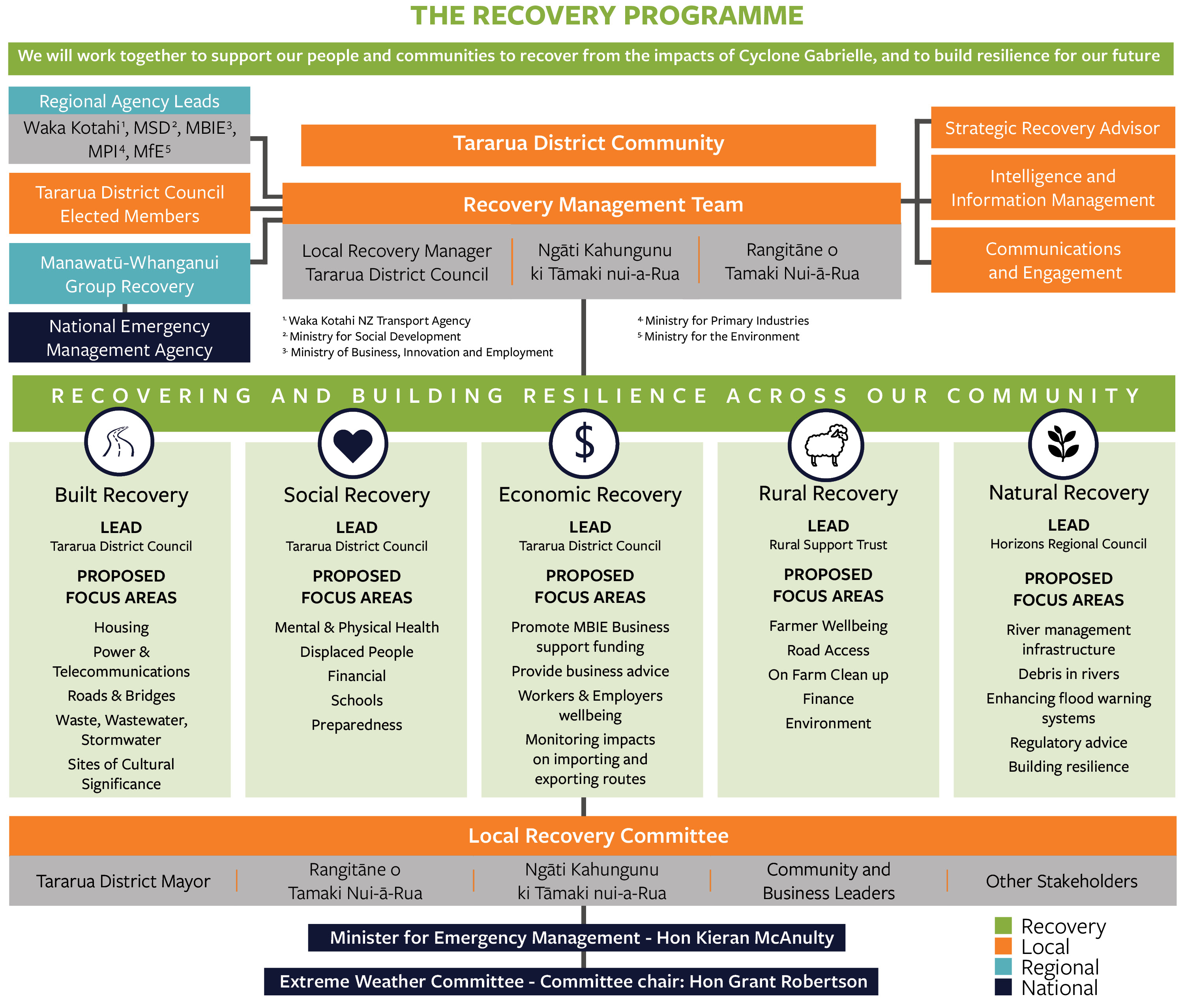Cyclone Gabrielle Recovery Programme
Published 20 Mar 2023
He waka eke noa We're all in this together
Mayor Tracey Collis says:
"Tēnā koutou katoa. Our biggest resource is our community – he waka eke noa, we’re all in this together – and we need to make sure we’re all paddling our oars at the right time and in the same direction. The recovery will not be simple, the Tararua District is one of many affected by Cyclone Gabrielle and affected councils will be looking for resources and financial assistance while dealing with wider economic impacts. We have an incredible community who are already working behind the scenes, putting their heads together and making it happen. As we move forward, it’s about continuing this work and making sure that we’re focussing our efforts where they are needed most – i.e. one-on-one visits with affected people and communities, cleaning up our rivers and fixing our most vulnerable roads and bridges, and making sure our communities are aware of government funding that they can access and additional support networks." |
Cyclone Gabrielle: What Happened in our District ?
Between 13-16 February 2023, the Tararua District experienced intense rainfall resulting in flooding in some areas of the district.
Tararua District Council declared a state of emergency on 14 February. A National State of Emergency was declared shortly thereafter.
- Rainfall examples: Ākitio Toi Flat; recorded 223mm of rain in 24 hrs, a 1 in 50 year event.
- Cadmus Bridge at Ākitio: Recorded 328mm from 13-16 February, a one in 100 year event.
- Tamaki Reserve: Recording 154.5mm in 24 hours, a one in 20 year event over a 24 hour period.
Some river catchments recorded higher river levels than the 2004 flood event.
Roads: Tararua has the 4th largest local roading network in New Zealand. At the peak of our response, 49 roads were closed across the district. This is now down to 12, with a further 14 open with restrictions. 1500 road faults were identified, including 276 dropouts.
The Emergency Operations Centre (EOC) was open 13th February – 6th March. During this time, the welfare team conducted approximately 265 phone calls and 527 house visits. The EOC were responsible for conducting many response activities, including but not limited to:
- Delivery of food, generators, fuel and other essential supplies to cut off areas
- Facilitating clean up and septic tank emptying
- Disposal of contaminated flood waste
- Liaising with power and telco providers
- Liaising with trucking companies
- Rapid flood assessments
- Numerous welfare needs assessments
Moving into recovery, the Recovery Programme will focus on the following short-term priorities:
- Assessing the impacts and identifying recovery needs
- Understanding the consequences so that action can be targeted
- Developing an initial recovery plan (100 day plan) for recovery
- Establishing recovery governance accountability and decision-making processes
- Developing a recovery communications & engagement plan
- Establishing recovery systems and processes
The Recovery Team will provide regular updates.
This is what the Recovery Programme looks like:
